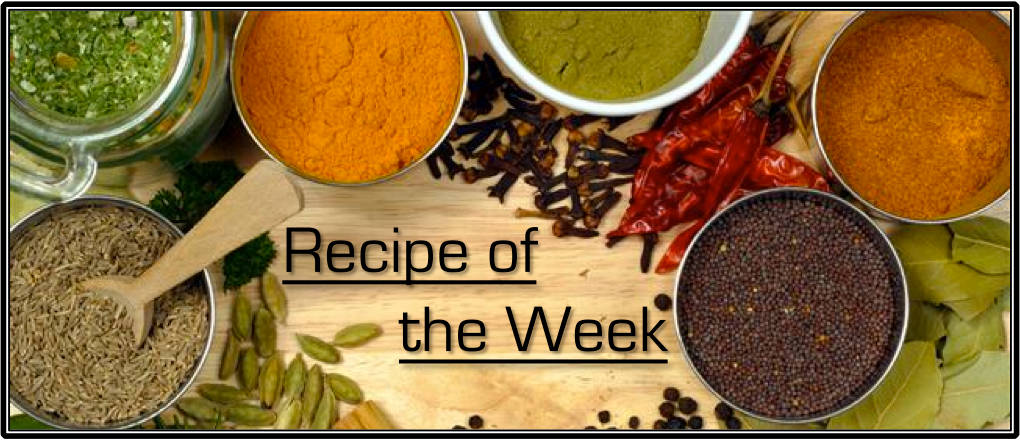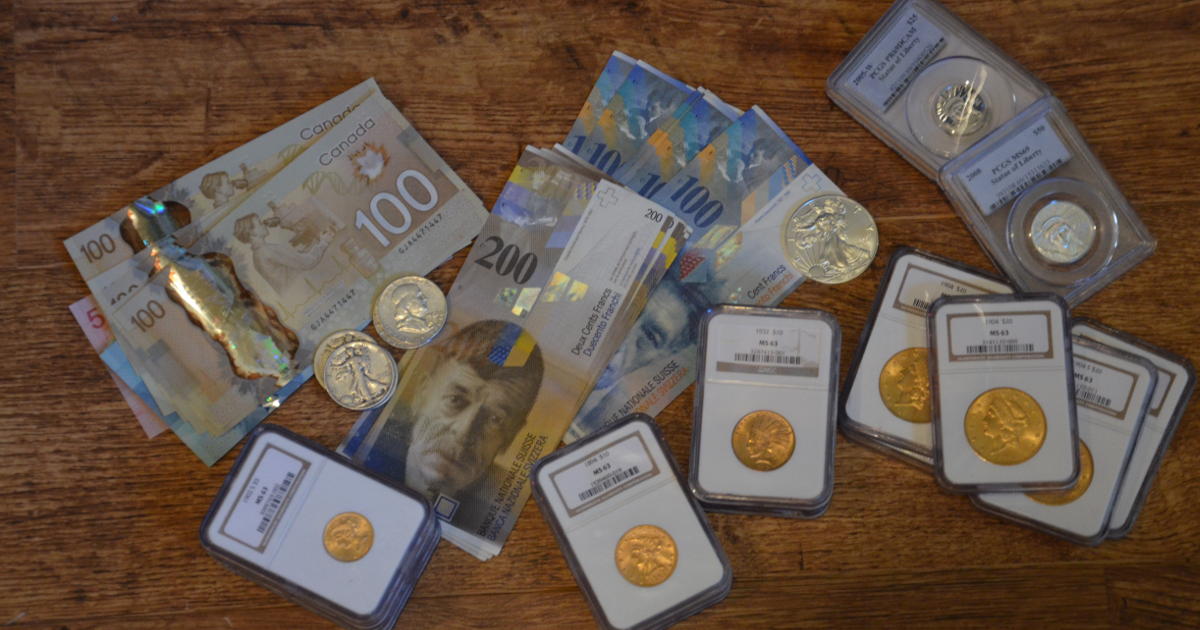“The ‘private sector’ of the economy is, in fact, the voluntary sector; and…the ‘public sector’ is, in fact, the coercive sector.” – Henry Haslitt
- Ad STRATEGIC RELOCATION REALTYFOR SALE: Self-sustaining Rural Property situated meticulously in serene locales distant from densely populated sanctuary cities. Remember…HISTORY Favors the PREPARED!
- Ad Ready Made Resources, Trijicon Hunter Mk2$2000 off MSRP, Brand New in the case
Preparedness Notes for Wednesday – November 01, 2017
November 1st, 1923, was the birthday of science fiction writer Gordon R. Dickson (born 1923, died January 31, 2001). Many of his novels and short stories, such as Wolf and Iron, have survivalist themes.
November 1st is also the birthday of economist Martin A. Armstrong. For many years he was a prisoner of conscience, in part because he refused to turn over his proprietary trading algorithms to Federal prosecutors. After seven years in prison without a trial, the longest Federal incarceration for contempt in American history, Armstrong was finally put on trial in a proceeding that was branded as a sham. He was convicted on securities fraud charges based upon some marginal testimony and given a five year sentence. He was released from prison in September of 2011. Notably, Armstrong continued to write his economics newsletter while in prison, producing most of the issues on a prison library typewriter.
Continue reading“Preparedness Notes for Wednesday – November 01, 2017”
- Ad Survival RealtyFind your secure and sustainable home. The leading marketplace for rural, remote, and off-grid properties worldwide. Affordable ads. No commissions are charged!
- Ad USA Berkey Water Filters - Start Drinking Purified Water Today!#1 Trusted Gravity Water Purification System! Start Drinking Purified Water now with a Berkey water filtration system. Find systems, replacement filters, parts and more here.
Preps and Practice- Part 1, by ArmedSafety
Prepping for the Inevitable “Zombie Apocalypse”
I have, for years, been a student of prepping for the inevitable. The inevitability could have been one of many options– CME, economic collapse, civil unrest, or one of many more called collectively “The Zombie Apocalypse” by me and my family. We all have our reasons for making our preps. For some it may be relatively simple preps for an ice storm that causes power loss for a few days, to those who go above and beyond to survive a nuclear holocaust.
The preps that I have fall somewhere in the middle, which is the category where I feel most preppers fall. I have the standard “bullets, band aids, and beans” that I feel would carry us through most apocalyptic scenarios while we were living in the wilds of Missouri and Arkansas.
My Job Moved Us To South Texas
Due to my job, we move around fairly often following construction work. Most recently, my job has taken me to south Texas. I began working in Gregory, TX in February 2017, originally staying in an RV. It’s not the most optimal for a SHTF situation. Eventually my family and I settled into a brick house with a little extra room for some provisions (and guests, too, I suppose).
Continue reading“Preps and Practice- Part 1, by ArmedSafety”
- Ad LifeSaver 20K JerryCan Water PurifierThe best water jerrycan you can buy on the market! Mention Survivalblog for a Free Filter ($130 Value)
- Ad Don't wait - get the ultimate US-made ultra-high performance US-made SIEGE Stoves and stunning hand-crafted SIEGE belts for Christmas. For stocking-stuffers see our amazing fire-starters. Gifts that can save lives. Big Sale!Every bespoke SIEGE buckle goes through an hours-long artisanal process resulting in a belt unlike anything else, with blazing fast performance and looks and comfort to match.
Economics & Investing For Preppers
Here are the latest items and commentary on current economics news, market trends, stocks, investing opportunities, and the precious metals markets. We also cover hedges, derivatives, and obscura. And it bears mention that most of these items are from the “tangibles heavy” contrarian perspective of JWR. (SurvivalBlog’s Founder and Senior Editor.) Today’s focus is on investing in Offshore Retreat Land. (See the Tangibles Investing section.)
Precious Metals:
We’ll begin with this news from Zero Hedge: “This Could Be Huge”: Gold Bar Certified By Royal Canadian Mint Exposed As Fake
o o o
Gold Softer As U.S. Consumer Confidence Index Rises To 17-Year High
Stocks:
Canada Stocks-TSX touches fresh record, Shopify tumbles
o o o
Bloomberg: The Biggest Stock Collapse in World History Has No End in Sight
Commodities:
Big Oil Has Learned To Live With Lower Oil Prices
o o o
Nick Cunningham asks: Can $60 Oil Last? JWR’s Comment: Unless a real shooting war breaks out somewhere, I expect oil to be in the doldrums for the next few years. I believe that the recent $60 per barrel blip is more of an aberration.
- Ad California Legal Rifles & Pistols!WBT makes all popular rifles compliant for your restrictive state. Choose from a wide range of top brands made compliant for your state.
- Ad Trekker Water Station 1Gal Per MinuteCall us if you have Questions 800-627-3809
JWR’s Recommendations of the Week
Here are JWR’s Recommendations of the Week for various media and tools of interest to SurvivalBlog readers. This week the focus is books, movies and sermons on The Reformation. (Yesterday marked the 500th anniversary of the movement.)
Books:
o o o
Why the Reformation Still Matters
o o o
Israelology: The Missing Link In Systematic Theology
Movies and Television:
Luther: The Life and Legacy of the German Reformer (documentary on DVD)
o o o
This Changed Everything: 500 Years of the Reformation
o o o
Jonny Quest: The Complete First Season. This cartoon series dates back to the politically incorrect days when boys were taught to be manly.
- Ad USA Berkey Water Filters - Start Drinking Purified Water Today!#1 Trusted Gravity Water Purification System! Start Drinking Purified Water now with a Berkey water filtration system. Find systems, replacement filters, parts and more here.
- Ad Click Here --> Civil Defense ManualNOW BACK IN STOCK How to protect, you, your family, friends and neighborhood in coming times of civil unrest… and much more!
The Editors’ Quote of the Day:
“As the world’s finest democracy, we do not do guillotines. But there are other less bloody rituals of humiliation, designed to reassure the populace that order is restored, the Republic cleansed.” – William Greider
- Ad Civil Defense ManualClick Here --> The Civil Defense Manual... The A to Z of survival. Looks what's in it... https://civildefensemanual.com/whats-in-the-civil-defense-manual/
- Add Your Link Here
Preparedness Notes for Tuesday – October 31, 2017
October 31st is the 500th Anniversary of the Reformation.
o o o
We are pleased to welcome back one of our original advertisers: Wiggy’s. They are a the makers of some incredibly well-made outdoor gear. Unlike nearly all of their competitors, Wiggy’s products are hand made in the United States. They are one of the few manufacturers of sleeping bags in the USA. Nearly all the rest are just importers that put their labels on foreign-made products. 98% of the sleeping bags sold in the USA are imported.
Continue reading“Preparedness Notes for Tuesday – October 31, 2017”
Too Many Answers Or Not Enough Questions?, by Old Bobbert
This is Bobbert’’s piece on “how to do success” in the creation of our new society. Remembering that not everything we need to do as preppers is a physical or procedural item, I am endeavoring to speak to the post-SHTF issues of the new society’s lifestyles and some related covenants, specifically those enduring agreements between peoples and the special agreements between persons and God.
Preppers Owing Much to Nation’s Founders
We are the preppers! We are the folks who are working now so as to have an acceptable future for ourselves and possibly some others. We call ourselves the preppers, and most of us may well be lacking a sound basic understanding of the trials, the errors, the blood, the anger, and the sorrows that were combined to create the free nation envisioned by the founding fathers, mothers, aunts and uncles, and especially the teenaged soldiers of what would become the United States.
We owe so much to the few who dared to even conceive that it would be possible to revolt against an uncaring, passive, overbearing government. They dared to fight against what was then the single most powerful nation on the entire planet.
Continue reading“Too Many Answers Or Not Enough Questions?, by Old Bobbert”
SurvivalBlog’s News From The American Redoubt
Here is SurvivalBlog’s News From The American Redoubt. This weekly column features news stories and event announcements from around the American Redoubt region. We also mention companies of interest to preppers that are located in the region. The emphasis this week is on wandering grizzly bears. (See the Montana and Wyoming sections.)
Idaho
First up: Pocatello man pleads not guilty to lighting fireworks that burned home
o o o
Jack Bannon, CDA resident and actor, dies at 77. JWR’s Comment: As a scenic resort area, Coeur D’Alene has a large number of celebrity retirees and celebrity vacation homes.
o o o
Cops: Idaho woman intentionally drove off cliff with 3 kids
o o o
Giant sequoia doing well four months after Idaho uprooting
Montana (Grizzly Bears)
Central and Eastern Montana: Prepare for long period of snow, cold
o o o
Montana man kills grizzly that broke into garage
Continue reading“SurvivalBlog’s News From The American Redoubt”
The Survivalist’s Odds ‘n Sods:
SurvivalBlog presents another edition of The Survivalist’s Odds ‘n Sods— a collection of news bits and pieces that are relevant to the modern survivalist and prepper from “HJL”. The Knockout Game rears its ugly head again this week.
Knockout Game
It appears that the knockout game is making a comeback. If you are not familiar with this “game” You need to be. It’s where players walk up to a stranger and sucker punch them in an attempt to get a one-punch knockout. With at least two high-profile incidents in the last week, residents in New York and Pennsylvania fear that this cruel prank is here again. Thanks to T.J. for the link.
Concealed Carry
What a difference one generation can make. In 1987 crime was out of control and on the rise. While most people (and state governments) felt that more gun control was the answer, nine states took a different route – “Shall Issue” permits were put in place making it possible for non-felons to apply for a concealed carry license and the government was obliged to grant it. Forty states had “May Issue” laws which typically resulted in a denial of the request and only one state didn’t require a permit at all. Now only seven states retain the “May Issue” laws and the ranks of those not requiring a permit is on the rise. There has not been “blood in the streets” as the pundits predicted and crime is on a downward trend. Heinlein was right. An armed society is a polite society.
The Editors’ Quote of the Day:
“God grants liberty only to those who love it, and are always ready to guard and defend it.” – Daniel Webster
Preparedness Notes for Monday – October 30, 2017
Tomorrow, October 31st, 2017, is the 500th anniversary of the Reformation. In the last 1700 years, the reformation had initially attempted to reform the wayward Roman Catholic Church but was unsuccessful at moving the leviathan from its perch, and the movement eventually moved to founding alternatives. While Martin Luther is considered the father of the movement, it is important to remember that there are others who preceded him and many others who followed him that had even greater impact on the formation of western thinking. John Calvin, the Puritans, the Huguenots, and the Presbyterians all played prominently in the settlement of America and in the molding of colonial beliefs and values.
Still, like all great revivals, the reformation had its share of problems as well. Considering the magnitude of effect that the reformation had on the future of the entire world, it is an event well worth remembering. The Price of Liberty Blog has an excellent writeup on both the positive and negative effects of this momentous event.
Continue reading“Preparedness Notes for Monday – October 30, 2017”
Kahr S9, by Pat Cascio
Always looking to improve and upgrade their handguns, Kahr Arms just released their latest compact 9mm, the S9, and that is under review today.
Kahr’s Rep of “Rolls Royce” of Trigger Pulls
Many years ago, I remember reading about Kahr 9mm handguns, and how all the gun writers raved about their DAO (Double Action Only) trigger pull. The writers claimed it was the Rolls Royce of DAO trigger pulls. Having been a writer for more than 25 years in the gun, knife, and survival fields, I took it with a grain of salt, knowing how some gun writers hype things in their articles. I don’t! I don’t need to. It was quite some time, after reading those many articles about the Kahr 9mm handguns that I actually ran across a used one and was sold on the spot. The DAO trigger pull is that good; it’s super slick, super smooth!
Owning My Kahr Handguns
Since owning my first Kahr handgun, quite a few have come into my hands over the years for testing. I even own more than a few. The hype just isn’t there. They are what they are, which is some of the best of the best when it comes to trigger pulls. Plus, you can have your Kahr is several different calibers– 9mm, .40 S&W, and .45 ACP, the most popular self-defense rounds available. And, you can even shoot some +P ammo through ‘em, but I don’t recommend a steady diet of +P ammo. The guns aren’t made for that, nor is your shooting hand. There’s plenty of recoil there, so you will limit yourself to shooting much +P ammo through these guns.
Recipe of the Week: Vegetable Soup, by OkieRanchWife
Hello!
Recently I was fortunate to find a great deal on potatoes. 50 pounds for $5.55. I bought 100 pounds. I have been blanching the slices that I cut on my mandolin so I could dehydrate them. After blanching enough to fill nine trays in the dehydrator, a very nice potato stock was left. I set aside 3½ cups to make pumpernickel rye bread. I still had about two quarts left. Ah ha! Vegetable soup. Here is the recipe.
Ingredients
- 2 quarts potato stock
- 2 ½ quarts chicken stock (I used my homemade stock made from leftover frozen chicken bones from previous meals.)
- 1 bag (32 ozs) cauliflower, broccoli, and carrot mix. (I found this on quick sale for half price.)
- ¼ head white cabbage, thinly sliced
- 8 ozs mushroom, sliced
- 2 Tbsp. dried parsley
- Garlic and onion powder, to taste
- Salt and pepper, to taste
Directions
- In a large stockpot, add all ingredients; bring to a boil.
- Reduce to a simmer.
- Cook for about two hours.
You can also add any vegetable you have in the fridge. I also put half a bunch of sliced kale. The cabbage and mushrooms that I used were fresh; however, I do have both those ingredient as dried veggies. This soup is wonderful on a chilly day. I pair it with the pumpernickel bread that I mentioned. Enjoy.
o o o
Useful Recipe and Cooking Links:
Do you have a favorite recipe that would be of interest to SurvivalBlog readers? Please send it via e-mail. Thanks!
Economics & Investing For Preppers
Here are the latest items and commentary on current economics news, market trends, stocks, investing opportunities, and the precious metals markets. We also cover hedges, derivatives, and obscura. And it bears mention that most of these items are from the “tangibles heavy” contrarian perspective of JWR. (SurvivalBlog’s Founder and Senior Editor.) Today’s focus is on a recent Radical Personal Finance podcast interview on tangible assets allocation, with JWR. (See the Tangibles Investing section.)
Precious Metals:
To begin, we read: Gold rises on safe-haven appeal after Catalonia declares independence
o o o
Asian Metals Market Update: October-27-2017
Stocks:
Nikkei hits 21-year high as banks, tech stocks firm
o o o
Tech Stocks Roar Again in Faint Echo of 2000
Commodities:
Michael Seery: The Corn Chart Looks Interesting














